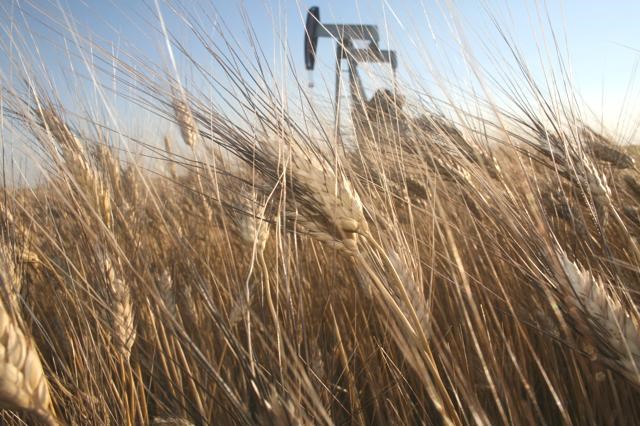Producers have begun seeding crops for the 2018 growing year in southeast Saskatchewan, with 15 per cent of the crops in the ground so far, according to Sask. Agriculture, which is behind the five-year average for this time of year of 26 per cent.
Provincially, about nine per cent of seeding is done, behind the five-year average of 19 per cent for this time of year.
The Weyburn region, crop district 2A, is at 32 per cent completed, while the Radville-Lake Alma area (district 3ASE) is at 38 per cent complete. To the west, the region from Ogema to Coronach and Assiniboia is about 11 per cent completed.
For farmer Dale Paslawski, who farms north of Weyburn in the Cedoux area, he noted he’s about half done, and some producers in the area are 60 to 75 per cent done as they’ve been pushing hard to get the seed in the ground.
Asked how he’s finding moisture conditions, he replied, “It’s very dry. Some of the low spots are very nice with moisture, but hills or open areas are dry, depending how strong the winds are. We’re not desperate for rain yet, but if it doesn’t come by mid-June, we’ll be concerned.”
He noted that organic producers usually wait until the May long weekend to start their seeding operations, plus some producers were holding off seeding of canola until there’s been some rain. For some producers who have been going hard, some will be wrapping up their seeding operations by the long weekend, said Paslawski.
“Water is a real dilemma for some guys,” said Paslawski, noting there are some dugouts in the area that are low or dry, and a number of producers are hauling water from Weyburn even for domestic use as their wells are getting low.
For the time being, the moisture levels are good for seeding, and the land is in good shape, he said, noting his area received about two to three-tenths of rain last week. It was a small enough rainfall that most people were out on the land the next morning.
“The land is really nice to work right now, and there’s less wear and tear on the air drills,” said Paslawski, adding some of his early-seeded crops from the start of May has already started emerging.
“The fields are looking really good, and farmers are pushing hard,” he said. “A real nice inch of rain would be nice right now.”
Topsoil moisture conditions have deteriorated slightly in the past week, with strong warm winds. Cropland topsoil moisture is rated as 36 per cent adequate, 47 per cent short and 17 per cent very short. Hay land and pasture topsoil moisture is rated as 18 per cent adequate, 55 per cent short and 27 per cent very short.
Spring winter wheat assessment continues as the fields green up. There have been some instances of grass and stubble fires in the region due to the dry field conditions. Pastures are slow to grow, and some cattle producers continue to supplement their animals feed.



